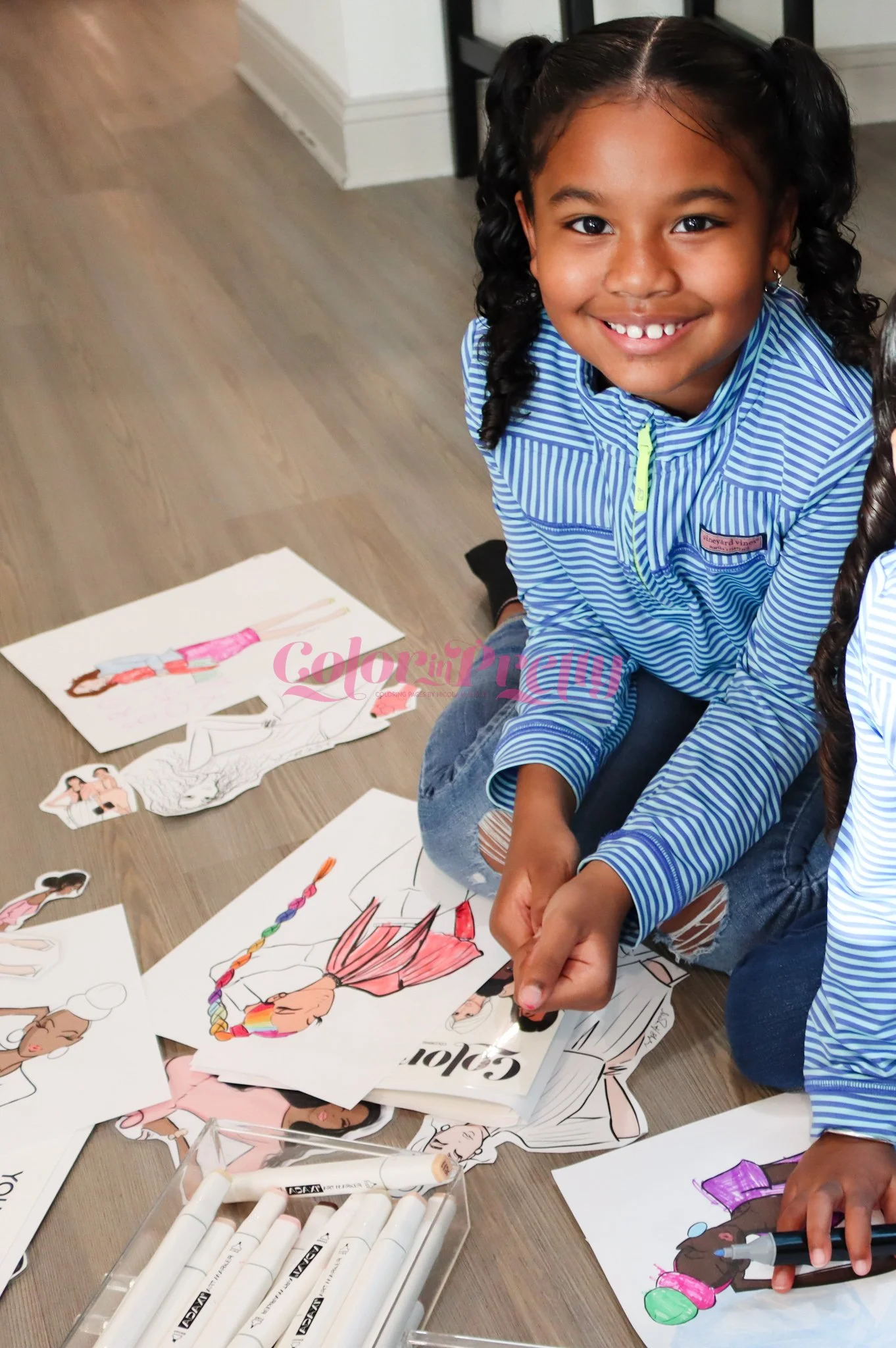Educational Guide for
Teaching Diversity Through Art
Helpful information on how to use Color In Pretty in class.
Exploring Diversity Through Coloring
Welcome to the “Color In Pretty” educational experience! These coloring sheets are designed to spark meaningful conversations about diversity, inclusion, and self-acceptance. This guide offers discussion prompts and activities to help children appreciate both their unique qualities and the rich diversity of our world.
Discussion Starters
For Ages 3-5:
“What colors did you choose for this picture? Why?”
“How are the children in this picture the same? How are they different?”
“What makes you special and unique?”
For Ages 6-8:
“How might this character be feeling in this picture?”
“What do you think these friends like to do together?”
“If you could ask this character a question, what would you ask?”
For Ages 9+:
“How does this picture show people respecting each other’s differences?”
“What can we learn from people who are different from us?”
“How can we make everyone feel welcome in our classroom/home?”
Engaging Activities
Color and Compare: Have children Color the same sheet differently, then discuss how each version is unique and beautiful in its own way.
Story Creation: Invite children to create stories about the characters in their coloring sheets. Who are they? What do they enjoy? What makes them special?
Diversity Web: After coloring, have children sit in a circle. Using yarn, create a web by tossing the ball to different children and having them share something they appreciate about diversity.
Mirror Activity: After coloring a character, ask children to draw themselves on another paper. Discuss similarities and differences they notice, emphasizing that all people are valuable.
Implementation Tips
Create a safe space where all questions and observations are welcomed
Listen actively to children’s perspectives without judgment
Use concrete examples that children can relate to
Connect discussions to real-world situations when appropriate
Emphasize that differences make our world more interesting and beautiful
Continue the conversation at colorinpretty.com and share your experiences with us!
Discussion Guide:
in the Classroom
Using Coloring as a Teaching Tool
Coloring activities offer a natural, low-pressure environment for discussing complex topics, such as diversity and inclusion. As children engage with “Color In Pretty” illustrations:
Their focus on the creative process makes conversations feel more natural
The visual representation of diversity becomes tangible
The act of coloring diverse characters builds positive associations
The finished artwork serves as a reminder of the discussions
Discussion Prompts by Theme
For Character Illustrations:
“What do you notice about this person?”
“What might this character’s story be?”
“How might this person’s life be similar to or different from yours?”
“What could you learn from spending a day with this person?”
For Group/Community Illustrations:
“What do you notice about how these people are different from each other?”
“How are the people in this picture showing respect for each other?”
“Why is it important to have friends who are different from you?”
“How does this picture show people working together despite differences?”
For Cultural Celebration Illustrations:
“What do you think is happening in this picture?”
“What might this celebration mean to the people participating?”
“How do we celebrate special days in our community?”
“Why is it important to learn about celebrations from different cultures?”
Extension Activities
Character Interviews: Have students imagine interviewing the character they colored. What questions would they ask? What might the character say?
Diversity Mural: Display completed “Color In Pretty” pages together as a classroom mural representing diversity.
Story Creation: Invite students to write stories about the characters they colored, encouraging them to think deeply about diverse experiences and perspectives.
Research Project: For older students, use the illustrations as starting points for researching different cultures, traditions, or historical figures.
Classroom Connections: Discuss how the diversity shown in the coloring pages is reflected in your classroom community.
Integrating Across Curriculum
Language Arts: Use completed coloring pages as prompts for creative writing
Social Studies: Connect illustrations to discussions of different communities and cultures
Art: Discuss artistic techniques for representing diverse skin tones and features
Social-Emotional Learning: Explore feelings related to belonging and acceptance
Bring “Color In Pretty” to Your Classroom
Transform your diversity curriculum with our complete collection of “Color In Pretty” coloring pages and educational resources. Visit www.colorinpretty.com to explore classroom bundles, lesson plans, and professional development resources.





